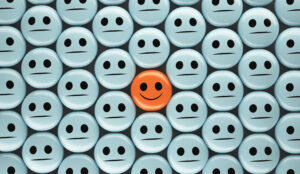When companies talk about being customer centric, they often talk about putting their customers at the centre of their decision making and only doing things that are in their best interests.
However, at the same time, many of those companies will also be leveraging a large number of the powerful insights that are coming out of behavioral science, behavioral economics and behavioral design and will be using them to help design and deliver a customer experience that stands out, attracts new customers and helps keep their existing customers for longer.
But, let’s look a bit closer at some of these insights and what it means to be customer centric.
Imagine a company that is keen to leverage some of the latest behavioral design insights, so they send their designers and product managers to attend one of BJ Fogg’s behavioural design courses at Stanford or one of Nir Eyal’s workshops based on his 2014 best-selling book: Hooked, where they will learn how to use behavioral design to create a product or a service that gets their customers ‘hooked’.
Now, surely, that raises some questions… Is designing something that gets your customers ‘hooked’, customer centric? Does that have your customers best interests at heart?
However you answer these questions, both BJ Fogg and Nir Eyal have expressed caution on how firms and brands use the persuasive power of behavioral design.
And, they are not alone in expressing caution.
The same issues apply to the application of insights from behavioral economics, where many governments, companies and brands are now ‘nudging’ their ‘customers’ to do different things, subtly change their behavior and take different actions.
Richard Thaler one of the co-authors of the 2008 book: Nudge, that first popularised the idea of ‘nudges’ is also cautious about the use and application of these new tools. In a New York Times article in 2015, he suggested 3 principles should guide the use and application of ‘nudges’:
1. Any nudge should never mislead and should always be transparent.
2. It should never be hard to opt out of the nudge.
3. There should always be a good and clear reason for why the nudge will improve the welfare of those being nudged.
These are great principles but, unfortunately, not all companies follow them. Thaler highlights a couple of examples of bad practice in his article and the Dark Patterns website does a good job of gathering a number of transgressions from around the web.
While it may seem like only a small thing to nudge a customer to do something or design something to get them hooked, leveraging these tools will have consequences and their misuse can cause more damage than any additional value that they may create.
As result, companies would do well to not only exercise care and good judgement in how and when these new tools are applied and used but also to decide how much is too much.
This should be done explicitly and through a set of standards, ethics, promises or guidelines that are actively managed and monitored. To not do so risks careless transgressions and unforeseen problems that could seriously undermine customer trust and your overall customer experience.
Author: Guest Author
Published On: 5th Jul 2017 - Last modified: 15th Aug 2025
Read more about - Customer Service Strategy, Customer Psychology, Service Strategy






































Well written! Behavioral science and customer centricity are the core points of a business and it should be understood in depth. Thanks for sharing the article!